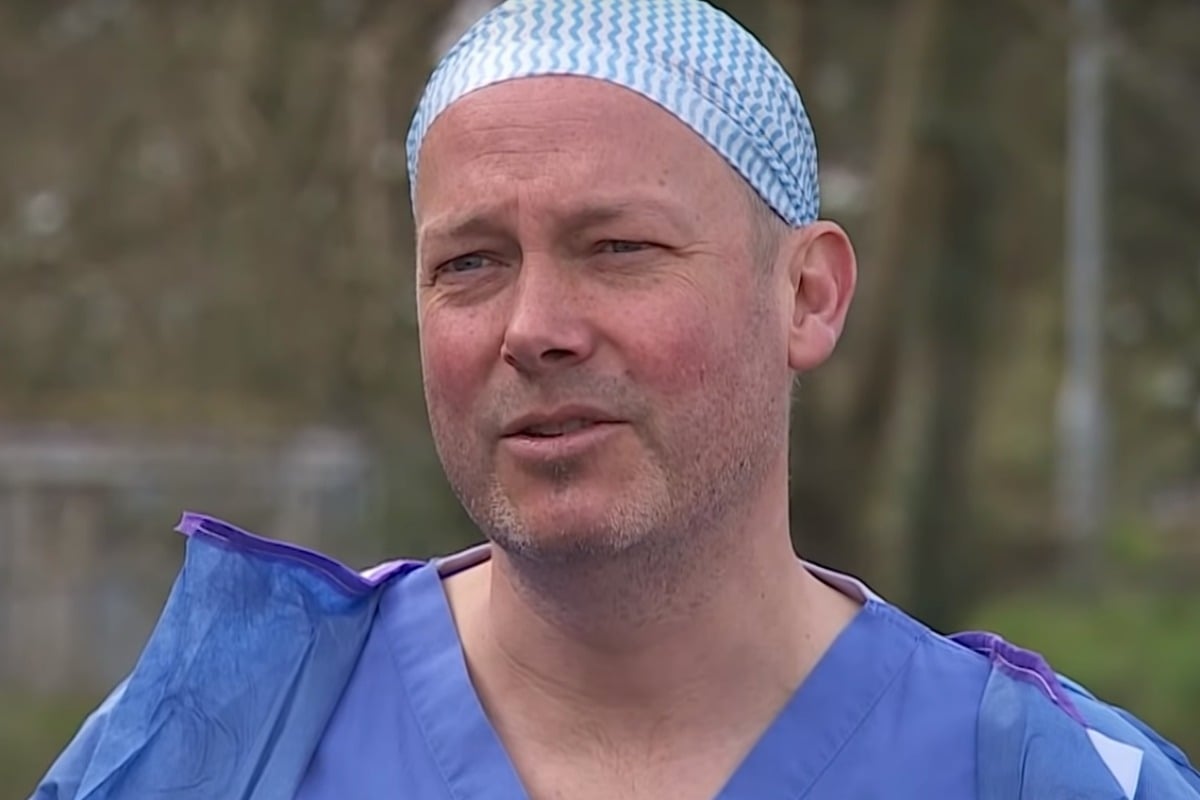
A doctor working on the COVID-19 frontline in Wales has shared a disturbing description of how someone can die after contracting the virus.
Speaking to the UK’s Channel 4, Dr David Hepburn, who is an Intensive Care Consultant at the Royal Gwent Hospital, shared what death from the coronavirus can look like without intervention.
“What we know is primarily the coronavirus causes respiratory failure. So when it spreads to the lungs, it causes what we call a pneumonitis, where the lungs become very wet and waterlogged inside. So the normal mechanisms that keep fluid in the blood break down. The little membranes and tissues and the bases of the lungs become porous, and that allows fluid to leak in from the circulation into the lungs, almost like drowning,” he explained.
Listen to the latest episode of Mamamia’s daily news podcast, The Quicky, below. Post continues after podcast.
In terms of intervention, Dr Hepburn explained that with a ventilator, patients can be kept alive as ventilators “help to keep the lungs open”.
“One of the things we provide with ventilators is pressure, which pushes some of that fluid out and helps to keep the lungs open,” he explained.
“So [without a ventilator]… people become exhausted because the work of breathing is so great that they basically become exhausted and die,” he added.
“So, if you imagine your lungs are normally like a nice, light sponge – light and easy to move. If you’ve ever pulled a sponge out of a bucket of water you’ll know how heavy and wet can become. It’s exactly the same thing – if your lungs are absolutely sodden, then it’s very, very difficult to breathe.


Top Comments
OK, I don't normally swear - but this article really shits me to tears. What's to be gained here. Who benefits knowing this if it's not some macabre fascination?
Because people who believe they know more than stupid scientists are openly stating Covid-19 is no worse than the flu, and all this effort to slow its spread is ridiculous.
But the CDC are also saying so:
1. The percent of deaths associated with pneumonia and influenza is above the epidemic threshold. The increase is due to an increase in pneumonia deaths rather than influenza deaths and may be associated with COVID-19.
2. 162 influenza-associated deaths in children have been reported so far this season. This number is higher than recorded at the same time in every season since reporting began in 2004-05, except for the 2009 pandemic.
3. CDC estimates that so far this season there have been at least 39 million flu illnesses, 400,000 hospitalizations and 24,000 deaths from flu.